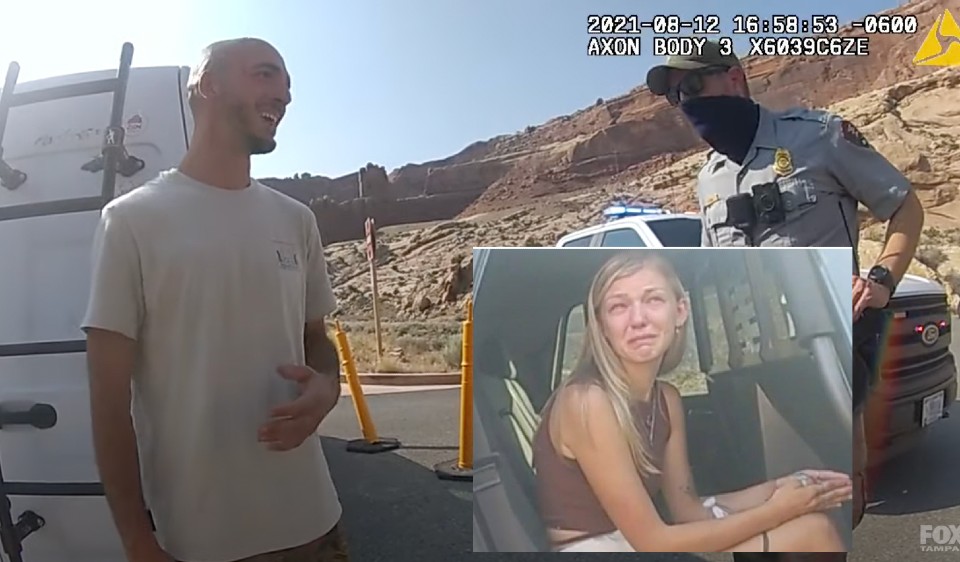An outside investigation into the police response to a domestic violence call involving Gabby Petito and Brian Laundrie found that the two Utah police officers made several mistakes during the call and recommended probation and additional training for them.
“I am confident and comfortable in stating the mistakes that were made were not made intentionally,” Price Police Capt. Brandon Ratcliffe wrote in the 102-page report, released Wednesday by the Moab Police Department.
The City of Moab said in a statement late Wednesday afternoon that it “intends to implement the report’s recommendations,” KJZZ reported.
As CrimeOnline previously reported, the two officers stopped Laundrie and Petito on August 12 after witnesses reported a possible domestic disturbance between them. Moab police released body camera footage of the stop, in which the officers decided that Petito was the primary aggressor in the incident. They declined to charge her, however, opting instead to separate the two for the night.
Petito was found strangled on September 19, eight days after her parents reported her missing, in Wyoming’s Bridger-Teton National Forest. Her parents, however, said they’d last heard from her less than two weeks after the Moab police stop.
Laundrie and Petito had set off on a cross-country van trip in early July. Laundrie returned home along on September 1, and neither he nor his parents — where he lived — told Petito’s parents about his return. Days after Petito was reported missing, Laundrie fled his parents home into a Florida nature preserve, where he was found dead in late October. His death was ruled a suicide on November 23.
Release of the body camera footage brought raised several questions — and criticisms — of the police response to the traffic stop, and Ratcliffe addressed those issues in his report.
“Would Gabby be alive today if this case was handled differently? That is an impossible question to answer despite it being the answer many people want to know. Nobody knows and nobody will ever know the answer to that question,” he wrote.
But, he said, while the mistakes the officers made were not intentional, they were serious. The report faulted the officers for not obtaining a statement from the person who initially called 911, for misinterpreting Utah’s domestic assault statute, and for failing to follow up with Petito when she reported that Laundrie had struck her.
“Brian was thoroughly examined for evidence, including an examination underneath his clothing for injuries of which he may not be aware, photographic evidence was obtained, and he was offered EMS services for his injuries,” Ratcliffe wrote. “None of this appears to have been provided to Gabby Petito, even after she reported a battery resulting in injury.”
The initial 911 reported that Laundrie had been seen striking Petito, but the Moab officers dropped that line of investigation and focused on allegations that Petito struck Laundrie while he was driving, causing him to swerve and hit a curb.
“The officers seemed distracted by the center line swerve and curb strike, and the admission that Gabby had punched Brian in the shoulder when the (police) lights were activated,” he wrote. “They spend the majority of the investigation pursuing this allegation, while the reason for the initial detention (the two 911 calls reporting a man shoving/slapping a woman) fell by the wayside. Even when Gabby reports a battery that caused injury, her statement is entirely ignored because the officers seem to be operating under a confirmation bias that influenced how they interpret the evidence and their theory of the case.”
Ratcliffe recommended that the officers, Eric Pratt and Daniel Robbins, be placed on probation and under further training on report writing and domestic violence investigation. He also suggested that the department itself review its report approval processes and implement a policy requiring photographs of all injuries reported by both suspects and victims.
For the latest true crime and justice news, subscribe to the ‘Crime Stories with Nancy Grace’ podcast



